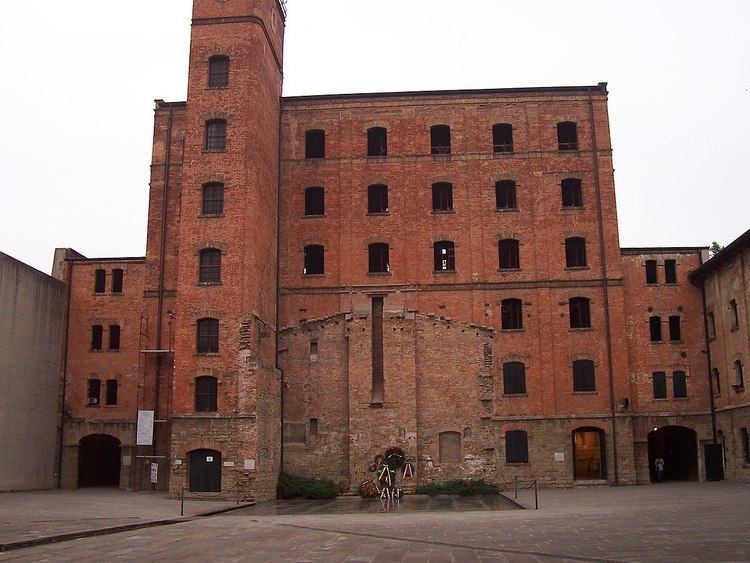Phone +39 040 826202 | ||
 | ||
Hours Closed now Thursday9AM–7PMFriday9AM–7PMSaturday9AM–7PMSunday9AM–7PMMonday9AM–7PMTuesday9AM–7PMWednesday9AM–7PMSuggest an edit Similar Trieste Cathedral, Revoltella Museum, Molo Audace, Piazza Unità d'Italia, Canal Grande | ||
Trieste risiera di san sabba
Risiera di San Sabba (Slovene: Rižarna) is a five-storey brick-built compound located in Trieste, northern Italy, that functioned during World War II as a Nazi concentration camp for the detention and killing of political prisoners, and a transit camp for Jews, most of whom were then deported to Auschwitz. SS members Odilo Globocnik and Karl Frenzel, and Ivan Marchenko are all said to have participated in the killings at this camp. The cremation facilities, the only ones built inside a concentration camp in Italy, were installed by Erwin Lambert. Today, the former concentration camp operates as a civic museum.
Contents
- Trieste risiera di san sabba
- Nella risiera di san sabba l unico campo di concentramento in italia con forno crematorio
- Background
- References
Nella risiera di san sabba l unico campo di concentramento in italia con forno crematorio
Background
The building was erected in 1913 and first used as a rice-husking facility (hence the name "Risiera"). During World War II, German occupation forces in Trieste used the building to transport, detain and exterminate prisoners. Many occupants of Risiera di San Sabba were transported to the German Nazi concentration camp at Auschwitz-Birkenau in Occupied Poland. Historians estimate that over 3,000 people were killed at the Risiera camp and thousands more imprisoned and transported elsewhere. The majority of prisoners came from Friuli, the Julian March and the Province of Ljubljana.
Boris Pahor was also held at the camp before being transported to the concentration camps of Dachau and Natzweiler.
After the war, the camp served as a refugee center and transit point. In the 1950s, many people, especially ethnic Italians fleeing then communist Yugoslavia, passed through the camp, not to mention Serbs and Russians, whose home was San Sabba, San Sabba Annex, Opicina, Gesuiti for more than three years before they were able to emigrate elsewhere.
